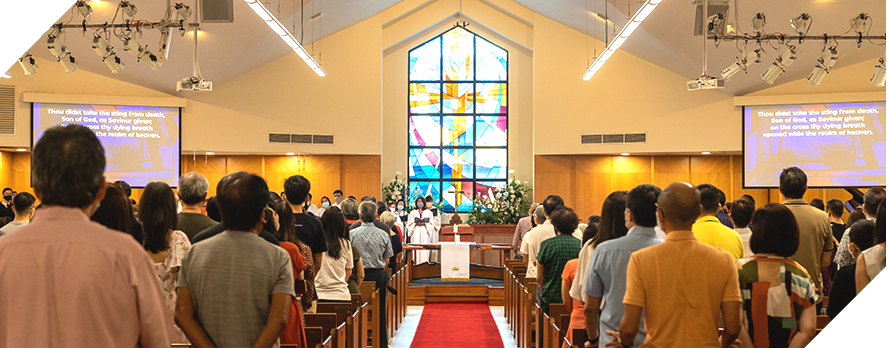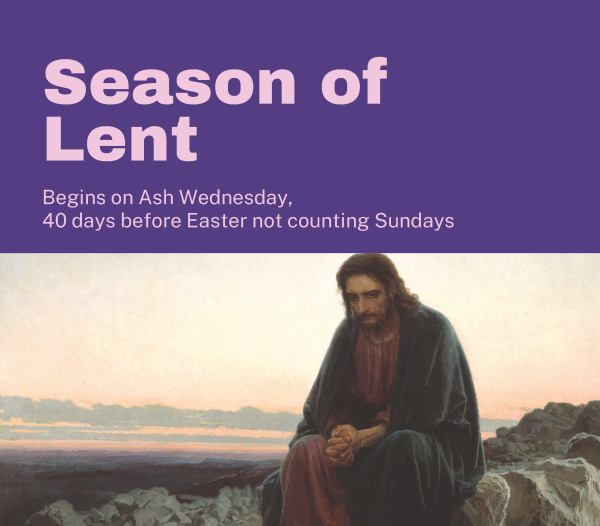
Event Calendar



WHAT IS IT?
Lent (from the Old German for “lengthen”) is a time of preparation for the celebration of Easter. In the Early Church, new believers prepared for their baptism at Easter through an extended time of fasting and reflection, imitating the temptation of Jesus in the wilderness.
WHY DO WE CELEBRATE IT?
We repent of our sins as we meditate on the price Jesus paid for us and our salvation. In penitence we learn to deny ourselves through fasting, that we may carry our cross and follow Jesus to Calvary.
THE CULMINATION AT HOLY WEEK
The climax of Lent is in its final week, known as Holy Week, when we journey with Jesus to the Cross and grave. Palm Sunday marks the triumphant entry of Jesus into Jerusalem. Maundy Thursday is when we remember how the Passover Lamb calls us to serve one another. Good Friday is when we remember the death of Christ on the cross.
WHAT DO WE DO?
Lent begins with Ash Wednesday, when a service is usually conducted, and ash is imposed on our foreheads as a visible sign of repentance. Throughout Lent we meditate on the suffering and death of Christ.
Purple is used to signify repentance and royalty.
Ash is imposed on our foreheads as a sign of repentance
We practice self-denial through fasting.
FASTING AND SELF-DENIAL
Fasting is traditionally a fast from food, either a complete fast from eating within certain hours of the day, or restricted to a simple diet such as bread and water. In recent times fasting can take the form of an abstinence from luxuries that our heart craves. All these forms seek to help us learn to deny ourselves and keep our eyes on Jesus.
REFERENCES
The United Methodist Book of Worship. Nashville, TN: The United Methodist Publishing House, 1992.
Senn, Frank C. Introduction to Christian Liturgy. Minneapolis, MN: Fortress Press, 2012.
Truscott, Jeffrey A. Worship: A Practical Guide. Singapore: Armour Publishing, 2011.